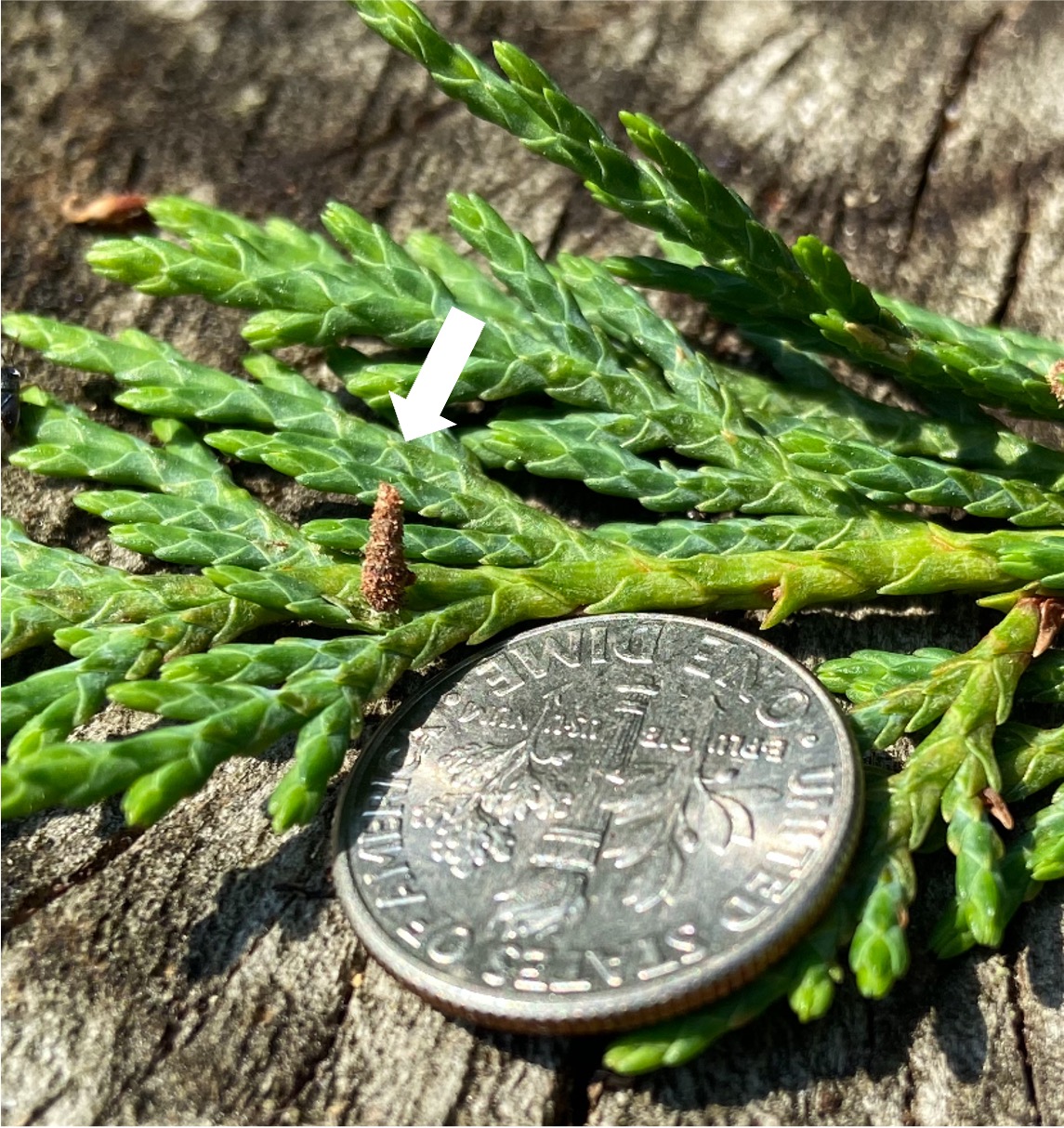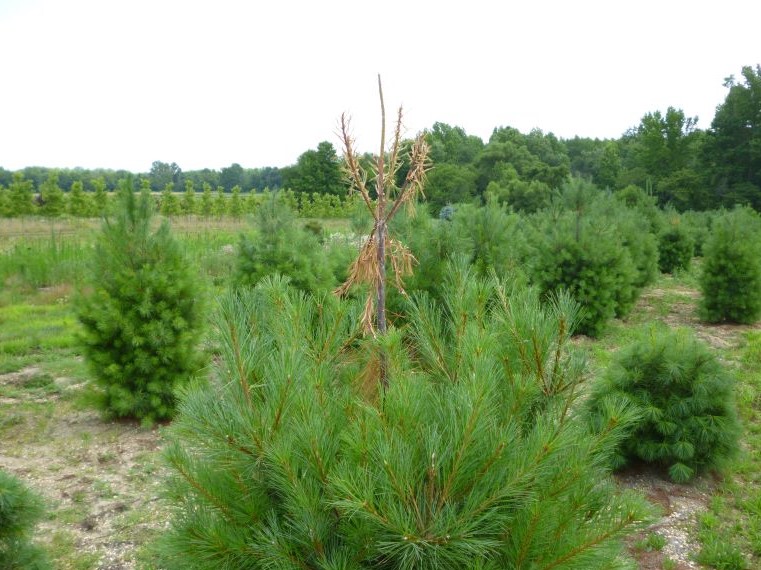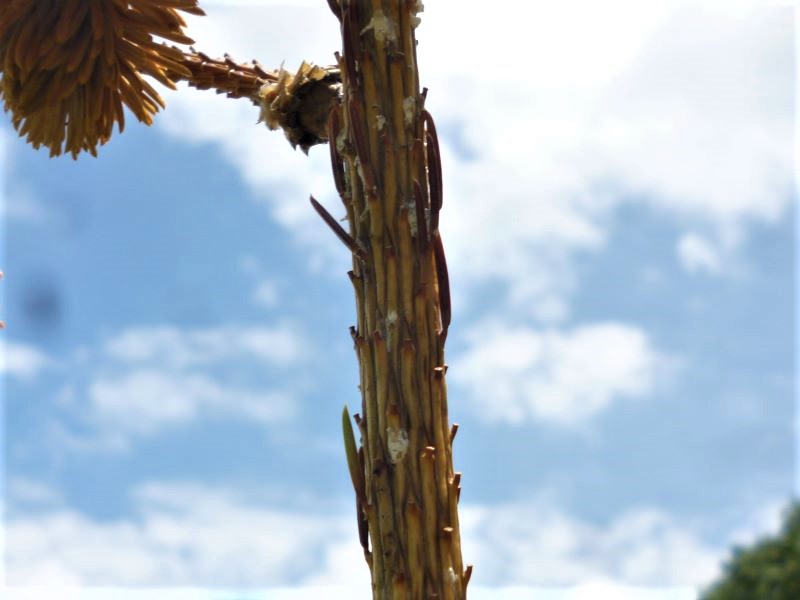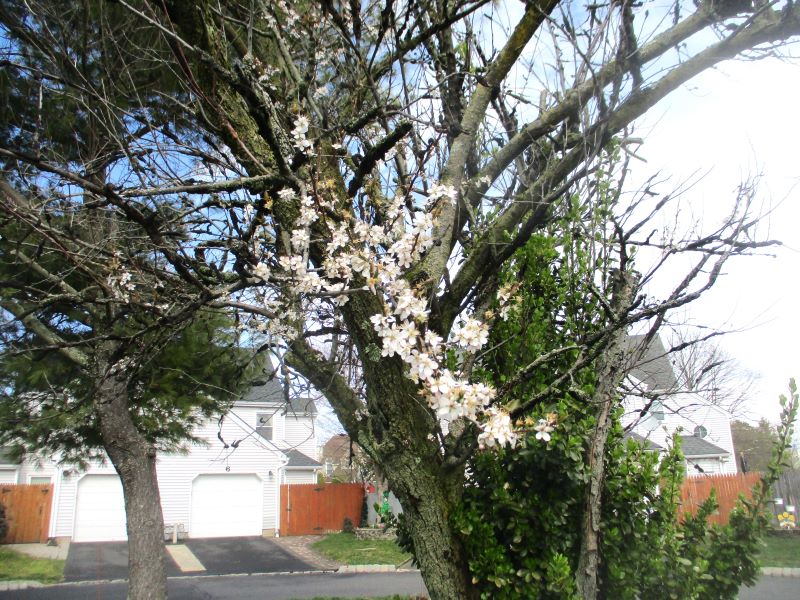Bagworms should begin hatching NOW through – 4 weeks in NJ, beginning in the southern regions. Now is an optimal time to get this pest on your radar and prepare materials or approaches to attack first/second instar caterpillars. The control window for this pest is typically between 600-900 GDD50 when they begin to hatch and become airborne, i.e. the “ballooning” phase. It is important to check for egg-hatch prior to applications for greatest chemical efficacy, and to continue scouting as they often hatch and develop at asynchronous rates.
It is critical to target these insects EARLY! We need to target when they are as small as shown in the image.
Bagworm management – mechanical: If eggs have not hatched: hand-remove sacs/bags. Typically female/egg filled sacs are higher in the canopy so keep that in mind while scouting. This removes the problem from the field or landscape.
Treatment options for Lepidoptera (caterpillars) to have at the ready – containing: B.t. (Bacillus thuringiensis), spinosad , bifenthrin ), cyfluthrin, carbaryl, chlorantraniliprole, cyclaniliprole, cyclaniliprole + flonicamid, Lambda-cyhalothrin, cyantraniliprole, Indoxacarb. NOTE – Lethal pesticide doses are important, as sub-lethal doses can trigger early pupation, making the pest all but invincible to chemical or biological treatments. Follow label exactly.
Still time to Sign up for the 2025 – Rutgers Ornamental IPM Program
(Join us for the next Session Tuesday 6/10/25)
Note we have clearwing borer lures and wing or delta traps, scale crawler tape, and yellow sticky cards available to commercial grower program members at our Cumberland (twaller@njaes.rutgers.edu) and Monmouth (william.errickson@njaes.rutgers.edu) RCE offices.
ALERTS:
- Scale crawler emergence throughout the state
- Bronze Birch Borer (BBB) and Emerald Ash Borer approaching adult emergence
- Clearwing Borer adult flight – still capturing clearwings
- Red-headed flea beetle (RHFB) egg hatch – adult emergence
- Bagworm reminders – be vigilant
UPLOADS 5/27 SESSION: (contains information on flathead borers (Bronze Birch, Emerald Ash), Armored scales, bagworms, Volutella blight in Boxwoods, Mildews)
Previous webinars:
- Click here for a PDF of May 13, 2025 webinar (contains information on scales and oomycetes) Click here for VIDEO of May 13, 2025 webinar
- Click here for a PDF of April 22, 2025 webinar (contains information on RHFB and early Clearwing borer treatments) Click here for VIDEO of April 22, 2025 webinar
- Click here for a PDF of April 08, 2025 webinar (Contains information on aphids and boxwood leafminer) Click here for VIDEO of April 08, 2025 webinar
(click the ‘Read More’ below for complete dates in S-C-Northern NJ per pest)




